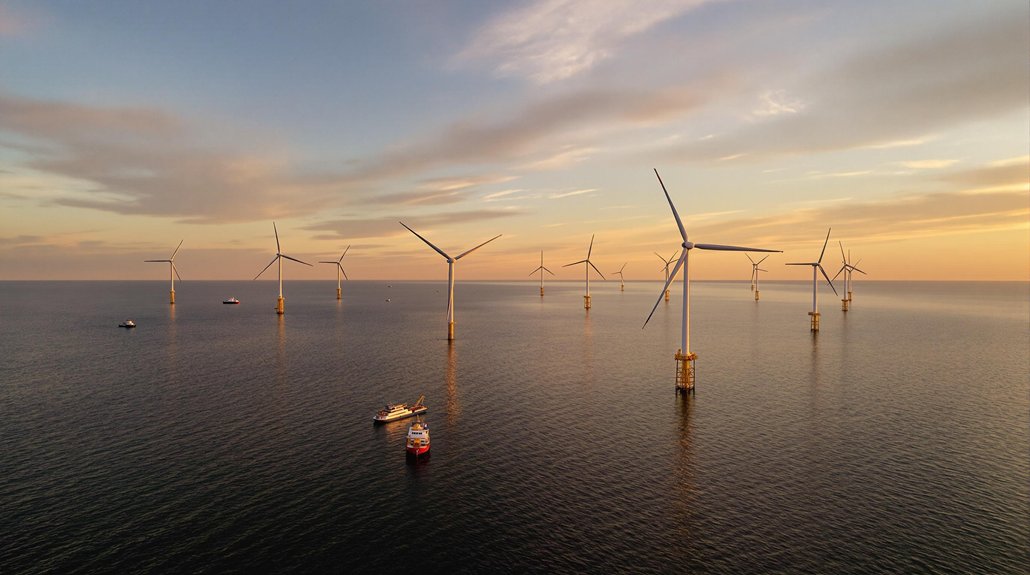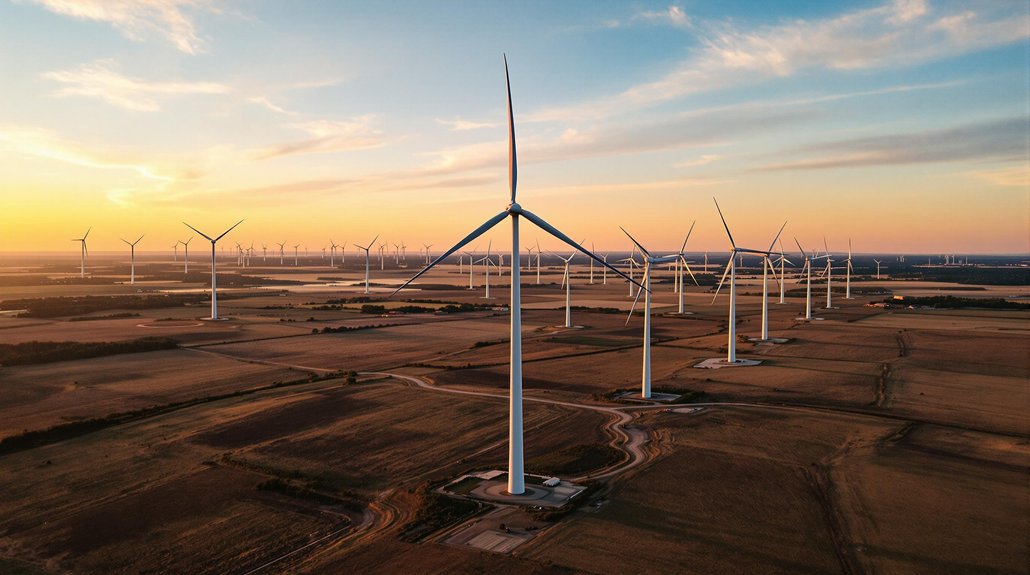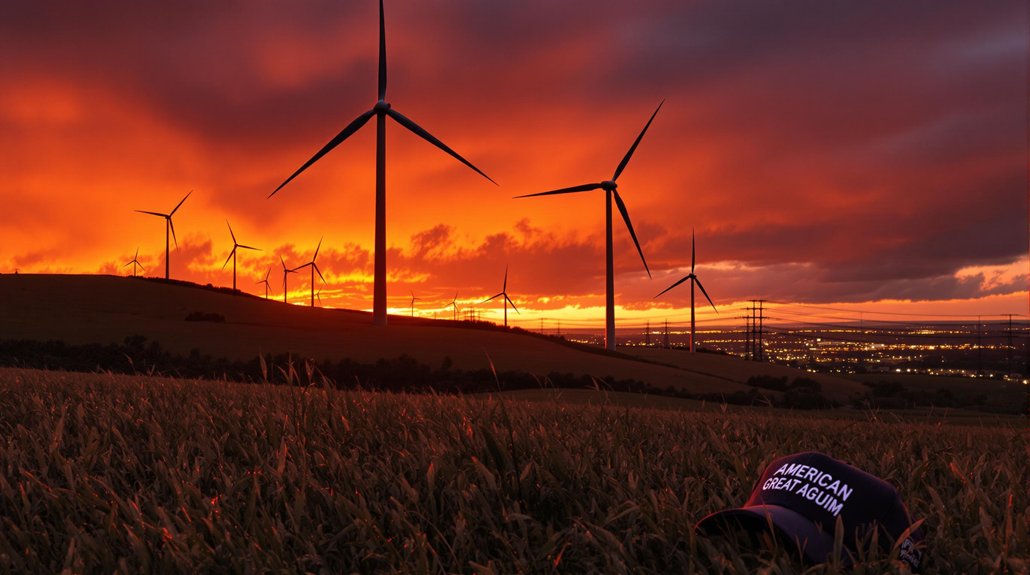A giant is rising from the Atlantic waters. The Coastal Virginia Offshore Wind project—CVOW for the acronym-obsessed—is quietly transforming into America’s largest offshore wind farm. Located 27 miles off Virginia Beach, this beast will eventually host 176 turbines capable of churning out 2.6 gigawatts of electricity. That’s enough juice for 660,000 homes. Not too shabby.
America’s next energy giant rises offshore—176 turbines bringing power to 660,000 homes while barely disturbing your beach view.
Construction kicked off in 2023 and is already halfway done. The crews are hustling to meet their end-of-2026 deadline. They’ve got to. The Virginia Clean Economy Act demands it, with its requirement for 5.2 gigawatts of offshore wind by 2035. Bureaucracy in action, folks.
The regulatory journey wasn’t a walk on the beach. CVOW survived the gauntlet of federal, state, and local permits through the NEPA review process. Two dozen studies. Countless stakeholder meetings. And just in time, too. The project secured approval before new federal actions put the brakes on offshore wind leasing elsewhere.
Not everyone’s a fan. Conservative groups have filed lawsuits claiming the project threatens whales and marine life. That litigation is on pause. The National Legal Policy Center has been particularly vocal in its opposition to Dominion. Convenient timing.
Price tag? A cool $10.8 billion—10% more than initially planned. Surprise, surprise. Guess who’ll absorb those costs? Ratepayers. You didn’t think Dominion Energy would eat the difference, did you?
Visually, the turbines won’t ruin your beach selfies. At 27 miles out, you’ll barely see the light gray structures. They’ve even got fancy aircraft detection lighting systems. Only turns on when planes are nearby. Thoughtful.
The economic impact is substantial. Jobs in manufacturing, engineering, and maintenance. Supply chain boosts. Infrastructure development. It’s one of Virginia’s largest recent investments. This project represents the broader renewable energy investments that now exceed those in fossil fuels globally. The project will create approximately 80 full-time jobs for maintenance operations once construction is complete.
Environmental trade-offs exist. Some birds and bats won’t make it. But compared to fossil fuels? Less greenhouse gas. Less water consumption. Energy diversity and security benefits.
Love it or hate it, Virginia’s offshore giant keeps growing. Wind doesn’t care about politics.
References
- https://coastalvawind.com/about-offshore-wind/frequently-asked-questions/general
- https://www.whro.org/environment/2025-02-04/dominion-says-cost-of-virginia-beach-wind-farm-is-up-and-customers-will-pay-more
- https://energy.virginia.gov/offshore-wind/Landing-page.shtml
- https://www.whro.org/environment/2025-06-23/federal-judge-temporarily-halts-lawsuit-over-dominions-virginia-beach-offshore-wind-farm
- https://www.boem.gov/renewable-energy/state-activities/cvow-cdeisappienvironmental-and-physical-settingada









